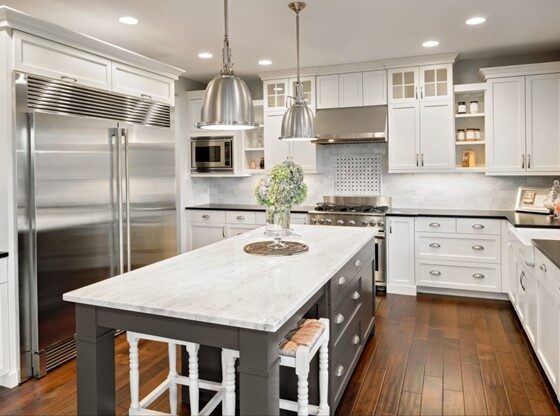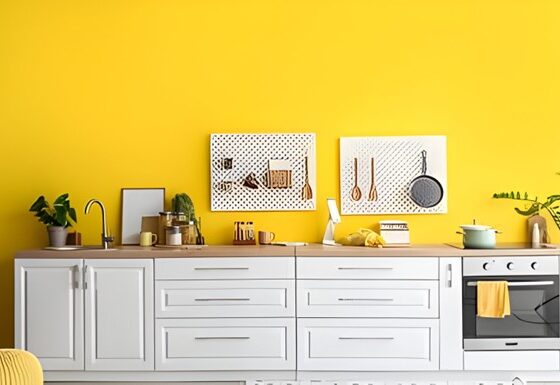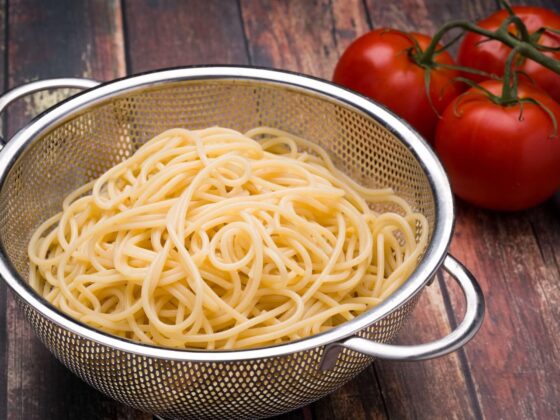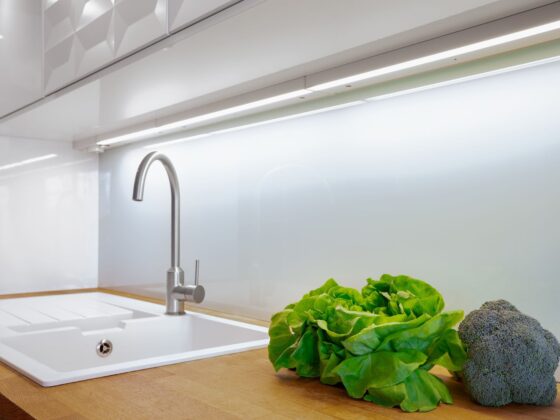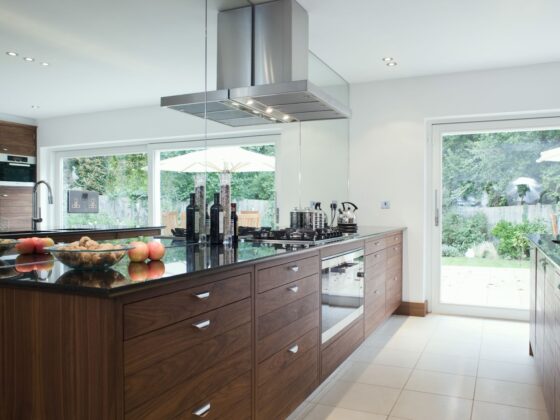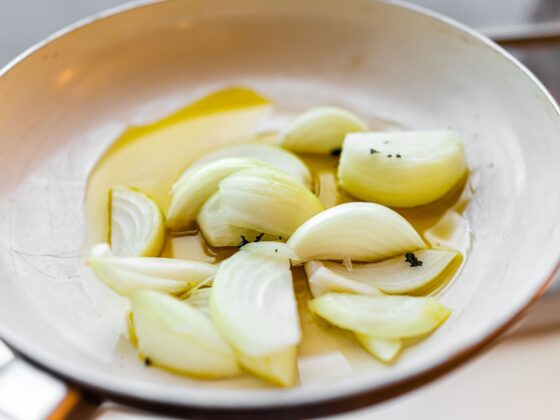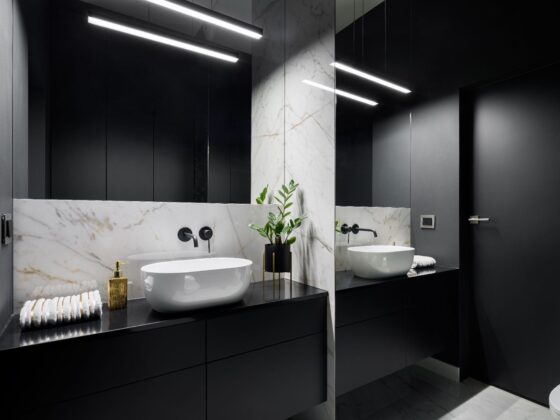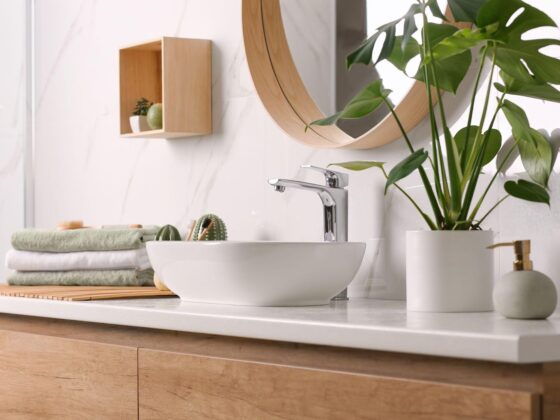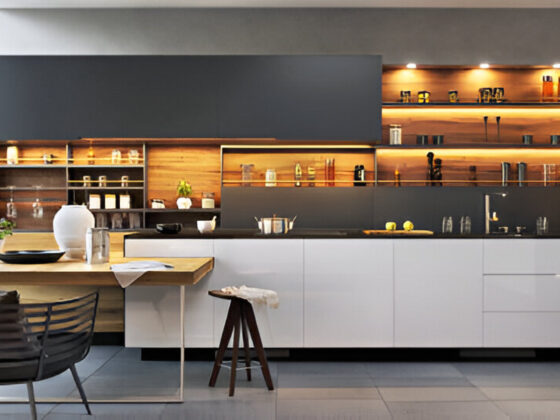In the kitchen, few tools hold as much allure and versatility as the Dutch oven. Home cooks and professional chefs alike for their unmatchable ability to enhance dishes to new heights of flavor and texture have revered this timeless kitchen item.
A Dutch oven is a heavy cooking pot with a tight-fitting lid, usually made of materials like cast iron or ceramic. It is versatile and can be used on the stovetop or in the oven. Because it retains heat well, it is great for slow-cooking, braising, and baking. The tight lid helps trap moisture, making it ideal for tenderizing tough cuts of meat and creating flavorful stews and soups. Its durability and ability to distribute heat evenly make it a kitchen essential for a wide range of dishes, from roasts to casseroles.
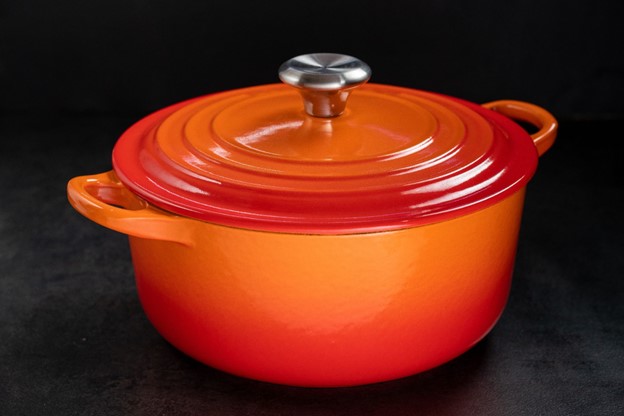
Did you know?
The term “Dutch oven” originates from the early 17th century when Dutch metalworkers were renowned for their skill in casting metal cookware. These metalworkers produced cast iron pots with thick walls and tight-fitting lids, known for their excellent heat retention and durability. Over time, the name “Dutch oven” became synonymous with this type of cooking vessel, regardless of its country of origin. Today, Dutch ovens are cherished by cooks worldwide for their versatility and performance in the kitchen.
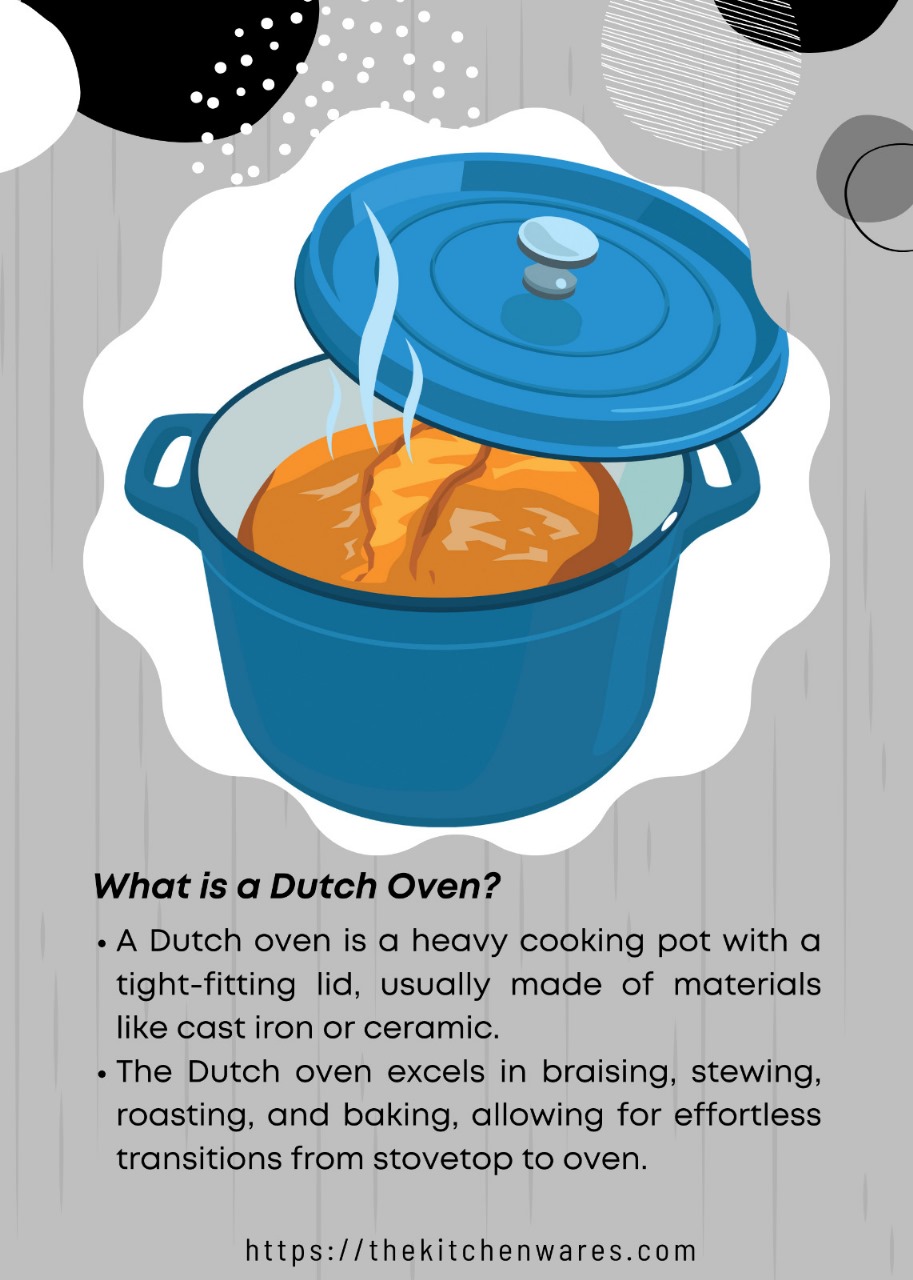
The Dutch Oven: An Introduction
At first glance, the Dutch oven may appear to be a simple cooking vessel. However, beneath its unassuming exterior lies a treasure trove of food-making potential waiting to be unleashed. Designed from durable materials such as cast iron, ceramic, and stoneware, the Dutch oven boasts exceptional heat retention and distribution properties, making it ideal for a wide range of cooking techniques.
Explaining the Power of the Dutch Oven
Whether you are braising, stewing, roasting, or baking, the Dutch oven excels in every cooking endeavor. Its versatility knows no bounds, allowing you to effortlessly transition from stovetop to oven with ease. From hearty soups and stews to tender roasts and crusty bread, the Dutch oven can do it all, easily transforming simple ingredients into cooking masterpieces.
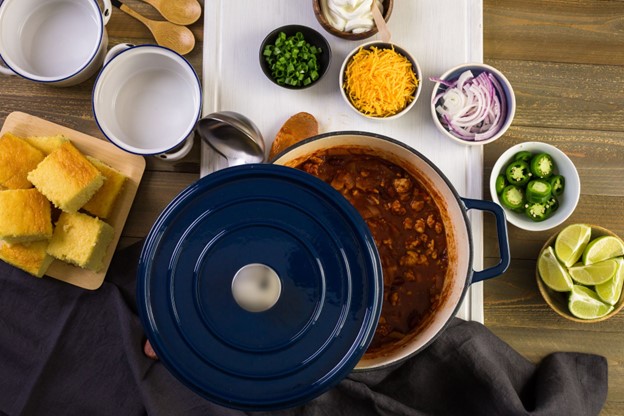
What Are the Benefits of a Dutch Pots?
The benefits of a Dutch oven are manifold, making it an indispensable tool in any kitchen arsenal. From its exceptional heat retention and distribution properties to its versatility in various cooking methods, the Dutch oven excels in braising, stewing, roasting, and baking, allowing for effortless transitions from stovetop to oven.
Its durable construction from materials such as cast iron, ceramic, and stoneware ensures longevity and reliability, while its ability to lock in moisture and flavor results in consistently tender and flavorful dishes.
Additionally, the Dutch oven’s wide range of sizes and designs cater to diverse cooking related needs, making it suitable for everything from hearty soups and stews to delicate desserts and crusty bread. Whether you are a novice cook or a seasoned chef, the Dutch oven’s unmatched performance and versatility make it an indispensable tool for achieving cooking excellence.
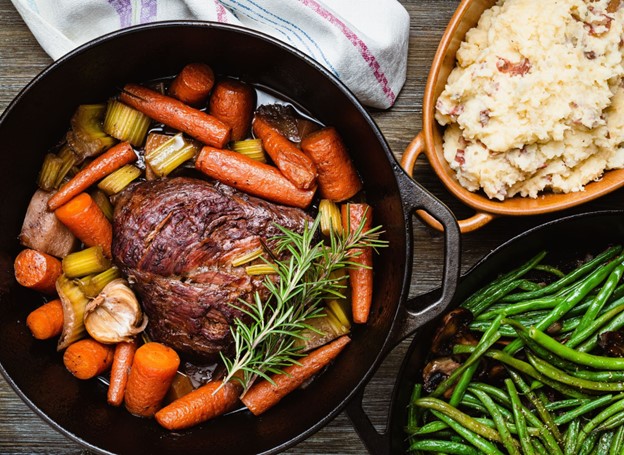
Choosing the Right Dutch Oven
When it comes to selecting the perfect Dutch oven for your kitchen, the options are seemingly endless. From classic red cast iron Dutch ovens to sleek ceramic and stoneware Dutch Oven varieties, each type offers its own unique advantages and characteristics. Consider factors such as size, material, and durability when making your decision, ensuring that your Dutch oven meets your cooking needs and withstands the test of time.
Is Dutch Oven Cooking Oven Different?
With the right tools and techniques at your disposal, mastering the art of Dutch oven cooking is well within reach. Start by preheating your Dutch oven to ensure even cooking and optimal results. Experiment with different recipes and ingredients, allowing your creativity to flourish and your taste buds to soar. And do not forget to share your food related creations with friends and family, spreading the joy of Dutch oven cooking far and wide.
Parts of a Dutch Oven
A Dutch oven typically consists of several key parts that contribute to its functionality and versatility in the kitchen:
1. Base: The base of the Dutch oven is the bottom portion that holds the food during cooking. It is typically made of heavy-duty materials such as cast iron, ceramic Dutch oven, or aluminum, providing excellent heat retention and even heat distribution.
2. Sides: The sides of the Dutch oven rise vertically from the base, forming the walls of the cooking vessel. These sides are often thick and sturdy, helping to trap heat and moisture during cooking for optimal results.
3. Lid: The lid of the Dutch oven fits snugly onto the top of the cooking vessel, sealing in heat and moisture during cooking. It is essential for braising, stewing, and baking, as it helps create a moist and tender environment for the food.

4. Handles: Dutch ovens typically feature one or two handles attached to the sides of the cooking vessel and lid. These handles are used for lifting and carrying the Dutch oven, as well as for removing the lid during cooking.
5. Knob: The lid of the Dutch oven often has a knob or handle on top, allowing for easy lifting and removal. This knob is usually made of heat-resistant material to prevent burns when handling the hot lid.
6. Seasoning: While not a physical part, seasoning is an essential aspect of a Dutch oven. Seasoning refers to the process of coating the interior of the Dutch oven with oil and heating it to create a non-stick surface. This seasoning layer helps prevent food from sticking and protects the Dutch oven from rust and corrosion.
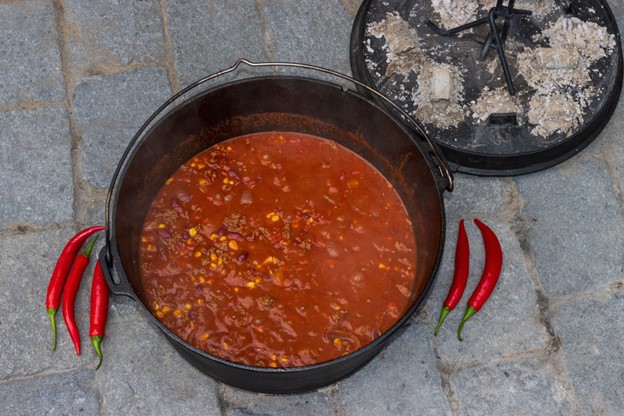
Why Buy Ceramic Cookware?
Investing in ceramic cookware offers a multitude of benefits that elevate your cooking experience to new heights. Ceramic cookware is renowned for its non-stick surface, allowing for easy food release and hassle-free cleanup, making it an excellent choice for both novice and seasoned cooks alike.
Additionally, ceramic cookware is free from harmful chemicals such as PFOA and PTFE, ensuring that your meals are cooked safely and without the risk of toxic fumes. Its durable construction and even heat distribution result in consistent cooking results, whether you are sautéing, searing, or simmering your favorite dishes.
Furthermore, ceramic cookware’s elegant design and vibrant colors add a touch of style to your kitchen, making it a versatile and attractive addition to any cooking space. Overall, investing in Dutch Oven ceramic not only enhances the quality of your cooking but also promotes healthier and more environmentally friendly meal preparation.

How To Use A Dutch Oven?
Using a Dutch oven is a very easy yet versatile process. Begin by preheating the Dutch oven on the stovetop or in the oven to the desired temperature, depending on the recipe. Once heated, add your ingredients and proceed with your chosen cooking method, whether it’s simmering, braising, roasting, or baking. The Dutch oven’s excellent heat retention ensures even cooking and flavorful results. After cooking, allow the Dutch oven to cool before serving your delicious creation.
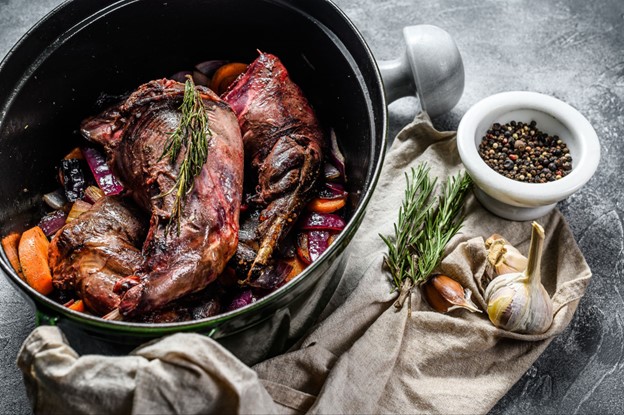
Maintenance and Cleaning of a Dutch Oven
Cleaning a Dutch oven is relatively simple, but it is essential to do so correctly to maintain its quality and long life. Start by allowing the Dutch oven to cool completely after use. Once cooled, fill the Dutch oven with warm, soapy water and let it soak for a few minutes to loosen any food residue. Use a non-abrasive sponge or cloth to gently scrub the interior, avoiding harsh chemicals or abrasive cleaners that may damage the surface. Rinse the Dutch oven thoroughly with clean water and dry it completely before storing.
How Do You Store a Dutch Oven?
When it comes to storing a Dutch oven, proper care is essential to protect its finish and ensure its longevity. Start by ensuring that the Dutch oven is clean and completely dry before storing it. To prevent scratching or damage, consider placing a soft cloth or paper towel between stacked Dutch ovens if storing multiple pieces. Store the Dutch oven in a cool, dry place away from direct sunlight or heat sources. If possible, store the Dutch oven with the lid slightly ajar to allow for air circulation and prevent moisture buildup. With proper storage, your Dutch oven will be ready to use whenever inspiration strikes.
The Future of Dutch Oven Cooking
As technology continues to evolve, so too does the world of Dutch oven cooking. From innovative design features to advanced materials and construction methods, the Dutch oven of the future promises to be even more versatile and efficient than ever before. Embrace the possibilities, experiment with new techniques, and let your imagination run wild as you embark on your own cooking related journey with the Dutch oven by your side.

Recapitulating
In conclusion, the Dutch oven is far more than just a cooking vessel; it is a symbol of cooking excellence and a gateway to endless baking and cooking possibilities. Whether you are a seasoned chef or an amateur cook, incorporating a Dutch oven into your kitchen repertoire is sure to elevate your cooking game to new heights. So go ahead, embrace the challenge, and unlock the full potential of the Dutch oven as you embark on your own cooking adventure.
